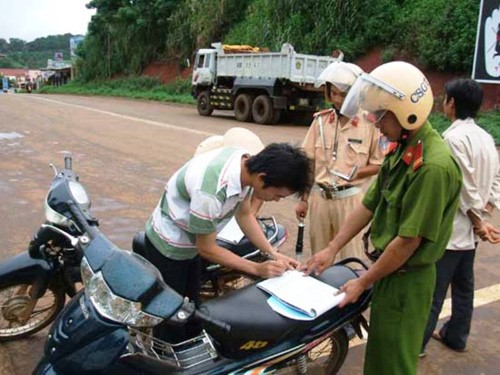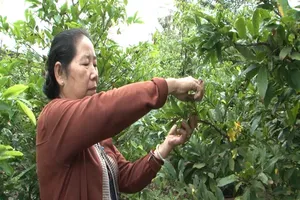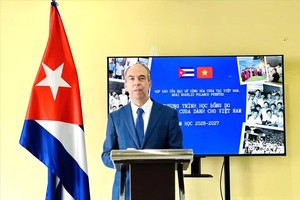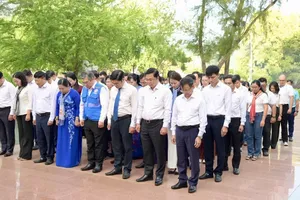Vietnam officially launched a campaign program called ‘Decade of Action for Road Safety 2011-2020’ on May 11, with plans to hold many activities throughout the country to mark the campaign.

Many activities will be organized by the Ministry of Transport, the AIP Foundation, the WHO and UNICEF to launch the Decade in Vietnam across the country by various authorities, including a press conference, distribution of helmets, drawing art pictures, demonstrations supporting safe roads and distribution of printed material to primary schools.
The Vietnamese government’s objective in the Decade of Action for Road Safety is to reduce the traffic fatality rate by 38 percent, from 13 per 100,000 population to 8 per 100,000 population.
AIP Foundation has implemented a communication campaign featuring ten celebrities promoting road safety to raise awareness in advance of the launch of the Decade of Action for Road Safety. UNICEF Vietnam National Goodwill Ambassadors, Model Vu Nguyen Ha Anh, Mister International 2008 Tien Doan, Miss Vietnam World Luu Thi Diem Huong, MC Idol Phan Anh, actor Luong Manh Hai, actress Lan Ngoc, Kathy Uyen, model Duy Bang and fashion designer Ha Linh Thu are participating in the campaign.
Road traffic injuries have become a leading killer around the world, particularly amongst the youth. WHO estimates that 1.3 million people die in road accidents in the world each year, making it the ninth leading cause of death.
In the absence of any sustained action to prevent road accidents, it is estimated that by 2020, 1.9 million people will be victims of road accidents each year. Besides causing deaths, road accidents cause up to 50 million people to suffer from non-fatal injuries.
In Vietnam, road casualties are a terrible burden on society. According to data from the Ministry of Health, in 2009 road accidents claimed more than 14,000 lives and caused a further 140,000 hospitalized injuries. Emergency care and other support services for road traffic victims are insufficient in many countries, including Vietnam. These avoidable injuries overload the already stretched health services.
Vietnam has a very successful mandatory helmet law, which has received wide international acclaim, an example of how road safety can be strengthened even in developing countries. Whilst ongoing challenges still require further attention, other risk factors such as drunken driving, speeding, overloading vehicles, poor infrastructure, insufficient public transport and limited capacity for pre-hospital trauma care, all contribute substantially to road traffic injuries in this country of more than 31 million motorcycles.
The Global Plan outlines steps towards improving the safety of roads and vehicles; enhancing emergency services and building up road safety management generally in all areas that are also addressed in the draft for national road safety strategy. It also calls for increased legislation and enforcement on use of helmets, seat belts and child restrain, while avoiding drunken driving and speeding. Today only 15 percent of countries have comprehensive laws that address all these factors.

To mark the launch of the Decade, governments and other organizations in more than 70 countries have reported to WHO that they have plans to host high-profile events and release national plans to improve safety and services for victims. A number of landmark national monuments like the Times Square in New York City; Christ the Redeemer statue in Rio de Janeiro; Trafalgar Square in London; the Jet d'Eau in Geneva and the historic Dong Xuan Market in Ha Noi will be illuminated with the road safety "logo", the new symbol for the Decade.
Ms Quentin Bryce, Governor-General of Australia, supported the UN’s Decade of Action for Road Safety (2011-2020) in Vietnam at a Helmets for Kids event on May 10.
Speaking at the “Helmets for Kids” launch ceremony, sponsored by the Australian Embassy and AIP Foundation, at the Mai Dich Primary School in Hanoi, Quentin Bryce AC said “The Vietnamese Government, the Australian Embassy, the AIP Foundation and other partners have made a commitment to increase the number of children wearing helmets to 80 percent over the next three years,”
“During this time it will be critical to educate parents and families about wearing helmets, not just sometimes, but every time the family is travelling on a motorbike.” said Her Excellency Ms Quentin Bryce.
Through Helmets for Kids, the Australian Embassy donated helmets and road safety education to 924 students and 54 teachers. Studies show that wearing a helmet on a motorbike reduces the likelihood of serious brain injury by 69 percent and death by 42 percent.
A recent study conducted by Vietnam National University found that only 16 percent of primary and secondary school students in Hanoi wear helmets when on motorbikes. The Mai Dich primary school is located in a high density traffic area, where children are vulnerable to road traffic crashes during rush hour, when they are commuting to and from school.
Traffic safety infrastructure - such as stoplights and zebra crossings - is sparse, putting children at greater risk of road traffic crashes. The majority of students at Mai Dich primary school commute to school via motorbike, and 85 percent of these students do not wear helmets, mainly due to cost barriers.
























